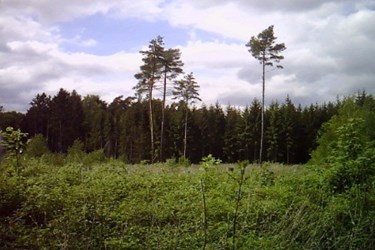Gated Digital Holography Enhances LIDAR's Ability To See Through Obscuration
By Jof Enriquez,
Follow me on Twitter @jofenriq

The Naval Research Laboratory (NRL) has utilized a new technique to enhance the precision of LiDAR (light detection and ranging) instruments to see through objects and ground features obscured by foliage.
Since its development in the 1960s, LiDAR has been used in a multitude of applications, with the more recent being its implementation as a sensing technology in projects mapping the ocean floor and steering autonomous vehicles. A spaceborne LIDAR to study the mesosphere and guide spacecraft also is in the works.
LIDAR's most well-known application, though, is as a land-surveying method, used to produce high-resolution topographic maps and three-dimensional modeling of the Earth's surface. An aircraft flying over a target area is equipped with a laser that transmits hundreds of thousands of pulses per second at the ground, and records the time delay between a light pulse’s transmission and reception to calculate elevation values, according to the U.S. Geological Survey. Airborne LiDAR collects point cloud data that represent several landscape features and incorporate these into a map.
However, LiDAR measurements of terrain features concealed by foliage have not been as accurate as ideally possible, because most of the light that reflects off vegetation is discarded by the detector's algorithm. Also, the stronger light signal that bounces off trees tends to hide the more relevant but fainter signal that bounces off the ground.
Scientists at the NRL in Washington, D.C. say they now have developed a technique to make LiDAR measurements more precise, a new technology that was viable only in the last five years.
“We have been working with a process called optical phase conjugation for quite some time and it dawned on us that we might be able to use that process to essentially project a laser beam through the openings of the leaves and be able to see through a partial obscuration,” said NRL's Paul Lebow, who presented the scientists’ research at The Optical Society’s Imaging and Applied Optics Congress, held June 26 -29, 2017 in San Francisco, Calif.
To make this holographic system to work, Lebow and colleagues designed a new type of pulsed laser with pulse widths of several nanoseconds, and gated measurements with similar time resolution, that selectively blocks the earliest-to-arrive light reflecting off foliage, and allow the reflected light that comes later from the obscured ground surface.
“The real key to making our system work is the interference between two laser beams on the sensor. We send one laser beam out to the target and then it returns, and at the exact same time that return [beam] hits the detector, we interfere it locally with another laser beam,” said NRL's Abbie Watnik. “We need complete coherence between those beams such that they interfere with one another, so we had to have a specially designed laser system to ensure that we would get that coherence when they interfere on the camera.”
The NRL team of scientists demonstrated the technology in a tabletop setup, but hopes to deploy a field-ready version of their prototype pending further funding and development.
